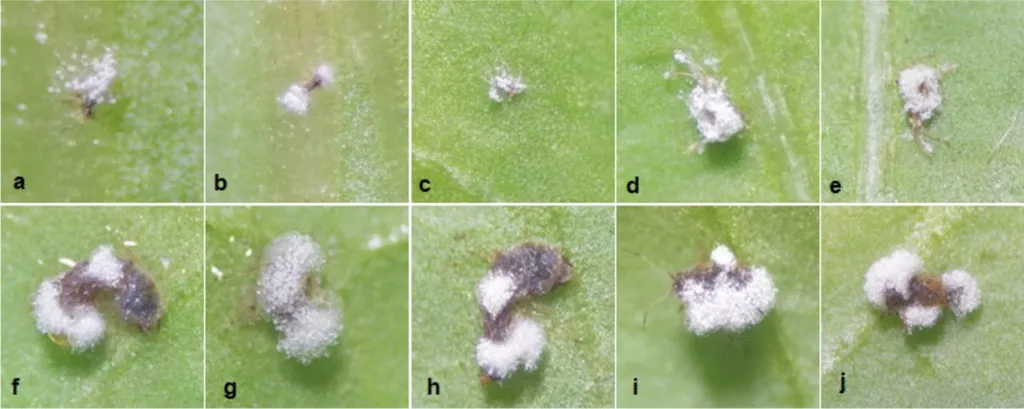In the heart of India’s cotton country, a quiet revolution is brewing, one that could reshape how farmers tackle a persistent pest. Researchers at the Tamil Nadu Agricultural University have uncovered a powerful ally in the fight against the cotton aphid, a tiny menace that has long plagued cotton crops and frustrated farmers. The secret weapon? A naturally occurring fungus with a taste for aphids.
Dr. Krishnaveni Mariappan, a researcher in the Department of Agricultural Entomology at Tamil Nadu Agricultural University, has been delving into the world of entomopathogenic fungi—fungi that attack and kill insects. Her team’s work, recently published in the Journal of Cotton Research (translated as “Cotton Research Journal”), highlights a promising discovery: a strain of Beauveria bassiana that could offer a sustainable solution to cotton aphid infestations.
The cotton aphid, Aphis gossypii, is no small problem. It’s a key pest of cotton, causing significant damage to crops and leading to substantial economic losses. Worse still, the aphid has been developing resistance to chemical insecticides, leaving farmers in a lurch. “Chemical control is becoming less effective, and there’s a growing need for eco-friendly alternatives,” Mariappan explains.
Enter Beauveria bassiana, a fungus that naturally occurs in soils and has a knack for infecting and killing insects. Mariappan and her team isolated five strains of this fungus from cotton-growing regions in Tamil Nadu, identifying them as Beauveria spp. based on their cultural and morphological features. Molecular analysis confirmed that they were all Beauveria bassiana.
Among these, one strain, dubbed B5, stood out. It demonstrated remarkable virulence, inducing 96.67% mortality in cotton aphids at seven days after treatment with a concentration of 1×108 spores per milliliter. “The results were quite striking,” Mariappan notes. “The speed and efficiency with which B5 infected and killed the aphids were impressive.”
Scanning electron microscopy images revealed the progression of the infection. Within 24 hours of exposure, spores of B5 attached to the aphids’ bodies. By 48 hours, hyphae—thread-like structures of the fungus—had penetrated the aphids’ exoskeletons. By 72 hours, the fungus had begun to produce conidia, spores that can infect new hosts, completing its life cycle at the expense of the aphid.
The implications of this research are significant. With the median lethal concentration (LC50) of B5 at 9.75×104 spores per milliliter and the median lethal time (LT50) at 72.31 hours, this strain could be developed into a potent biopesticide. Such a product would offer farmers an effective, eco-friendly tool for managing cotton aphid infestations, reducing their reliance on chemical insecticides.
Moreover, this discovery could pave the way for further research into indigenous entomopathogenic fungi. As Mariappan points out, “India’s diverse ecosystems are home to a wealth of microbial life. There’s so much more to explore and harness for sustainable agriculture.”
The potential commercial impacts are substantial. A biopesticide derived from B5 could tap into a growing market for eco-friendly pest control solutions. It could also bolster India’s cotton industry, which is a major contributor to the country’s economy and a significant player in the global textile market.
In the broader context, this research underscores the importance of exploring and utilizing indigenous biological resources for sustainable agriculture. It’s a reminder that nature often has its own solutions, waiting to be discovered and harnessed. As the world grapples with the challenges of climate change and environmental degradation, such solutions could be more valuable than ever.
In the meantime, Mariappan and her team continue their work, driven by the potential of their discovery and the promise of a more sustainable future for cotton farming. Their research, published in the Journal of Cotton Research, is a testament to the power of scientific inquiry and the potential of indigenous resources to shape the future of agriculture.

